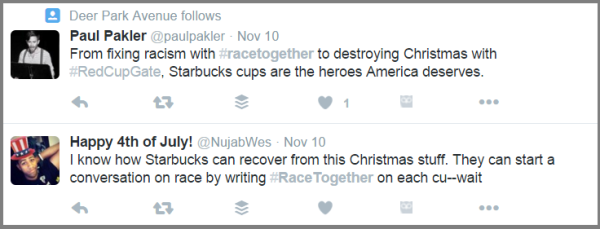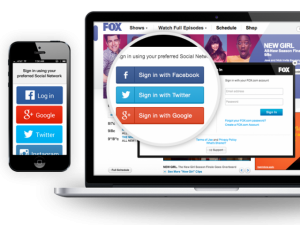Hashtag fails have seemed ever-present in recent years, from dissatisfied tweeters co-opting McDonald’s branded message to epidemics of bad spelling on Instagram to very awkward abbreviations.
In the former case, we can specify these trip-ups as hashtag hijacking, which happens when a hashtag pertaining to a grassroots movement or branded promotion are co-opted by other groups, often leaving the original poster looking foolish. Think of Digiorno Pizza’s famous flub in which they unwittingly mocked a domestic abuse awareness campaign.
These sorts of flubs can arise out of a single, poorly though-out tweet, or from a concerted, multi-channel campaign. Moreover, while many brands encounter these hashtag fails on Twitter, our customers tend to be most concerned about their use for sourcing visual commerce photos on Instagram.
Regardless of where your company is using them, here are five more entertaining and pertinent examples of hashtag missteps, and, more importantly, tips for saving yourself from the same fate.
Mistake #1: Not researching the hashtag on Twitter, Instagram, and elsewhere before using it.
As with any other marketing initiative, it makes sense to do a little research before you commit time, money, and your brand’s reputation. While it’s easy to look up any hashtag you’re considering on any social media site, some marketers somehow overlook this step.
Lululemon, for example, decided to use #WTFSept for an Instagram contest in 2012. To the athletic apparel company, the hashtag stood for “What the Focus September,” the name of their campaign. However, to thousands of other people, the hashtag was already related to September 11. When Lululemon didn’t do their research, they ended up adding tons of yoga pictures to 9/11 memorial posts.

Mistake #2: Not continuing to monitor and research your hashtag(s) throughout your promotion.
Hashtags, like all language, are mutable. People shape them for their own uses, and meanings shift over time. That’s why you need to continually monitor how people are using your hashtag throughout your campaign.
An apparel company recently discovered that the hashtag they’d been using to collect customer photos on Instagram had been picked up by an escort company. All the team members who were curating and moderating all these photos began to get bombarded with risqué pictures of, well, not their clothing. While the company wasn’t able to help the issue on Instagram, they at least didn’t automatically publish the photos on their website.
Sometimes, like in this case, you need to just move on and consider a new hashtag. In other situations, it may make sense to stand your ground and politely ask the other party to stop using your hashtag. This happened when OnePlus, a smartphone manufacturer, noticed that Verizon had started to use their hashtag. #NeverSettle. OnePlus contended that they originated the tag and tried to launch a social media campaign to retake it. Seven months later, however, neither OnePlus nor Verizon seems to be using the hashtag. In another twist, dissatisfied Verizon customers have since co-opted #NeverSettle for their own use.

Mistake #3: Not overthinking it.
The word jumble that is the hashtag can create a lot of confusion, since people read terms differently depending on what they’re looking for. You should be absolutely sure that your hashtag is not ambiguous.
We have numerous examples of this, from Burger King’s low fat French fry abbreviation to Susan Boyle’s record launch. A safer-for-work example happened when Margaret Thatcher died and the hashtag #nowthatchersdead popped up. While some people took it for its intended meaning–#NowThatchersDead—others saw singer Cher’s name in it–#NowThatChersDead.

The lesson here? If it’s an acronym, abbreviation, or even more than one word, re-read it, show it to 10 people, and re-read it again.
Mistake #4: Not considering all possible outcomes.
While every company is inevitably going to get some negative responses on social media, you can safeguard against some of the worst of it by only communicating specific ideas.
In March of 2015, SeaWorld launched a Twitter campaign with the hashtag #AskSeaWorld. While their team intended to spark transparent and illuminating conversations (probably), they failed to realize the negative potential of a completely free invitation to ask questions. PETA and other animal rights activist groups quickly seized the opportunity to shame SeaWorld for their controversial reputation. As of late December 2015, the hashtag was still actively being used by critics.

The takeaway: when in doubt—or when a movie all about the alleged abuses at your company recently came out—ask for very specific contributions.
Mistake #5: Engaging with controversial or political issues.
The advice here is simple: if you’re trying to promote your products on social media, don’t use a medium that only allows 140-character messages to express complex ideas about politics, social issues, or even natural disasters. In fact, don’t do it on any social media channel. At best, it’s reductive. At worst, your company will look like you’re trying to profit off of a sensitive issue or tragedy.
One disastrous example of this is happened in March 2015, when Starbucks launched the hashtag #RaceTogether. It was a possibly well-meaning but thoroughly misguided attempt to “spark a national dialogue about race.” Some might say the coffee company was trying to profit off the unrest set off by the recent shooting deaths of unarmed black men in the US, but we’ll just say that regardless, it wasn’t well-received.

Keep the morals of these five stories in mind when undertaking social media marketing or brand advocacy initiatives, and you’ll be spared a lot of embarrassment.
If you’re interested in avoiding this and other types of disasters, join our live webinar “User Generated Content and Reviews in 2016: Out With the Old and In With the New” on January 27th at 11 am PST. Save your spot now!
Digital & Social Articles on Business 2 Community(96)




